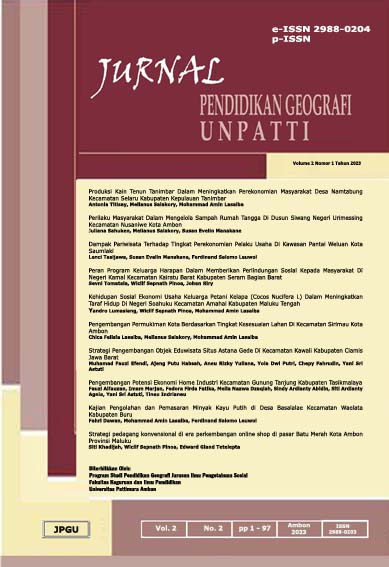Kontribusi Aktivitas Jasmani terhadap Gaya Hidup Sehat Mahasiswa sebagai Investasi Kesehatan Masa Depan
The Contribution of Physical Activity to Students' Healthy Lifestyles as an Investment in Future Health
Abstract
This study aims to explore the contribution of physical activity to students’ healthy lifestyles as a form of long-term health investment. The main focus includes student engagement in structured physical activities, the implementation of healthy living practices, and perceptions of the long-term benefits of physical exercise. A descriptive quantitative approach was employed, involving 140 active students from the Physical Education Study Program at Pattimura University. Data were collected through a closed-ended questionnaire covering three aspects: physical activity (type, frequency, duration), healthy lifestyle indicators (diet, rest, physical activity, and avoidance of risky behaviors), and perceptions of five long-term benefits. The results show that most students are physically active, with dominant activities being fitness and jogging, high frequency (≥4 times/week), and a duration of 30–60 minutes per session. Diet and rest practices were generally good, but avoidance of risky behaviors remained low. Students had positive perceptions of improved endurance and mental health, though awareness of quality of life in old age was still limited. Health education and institutional support need to be strengthened.














